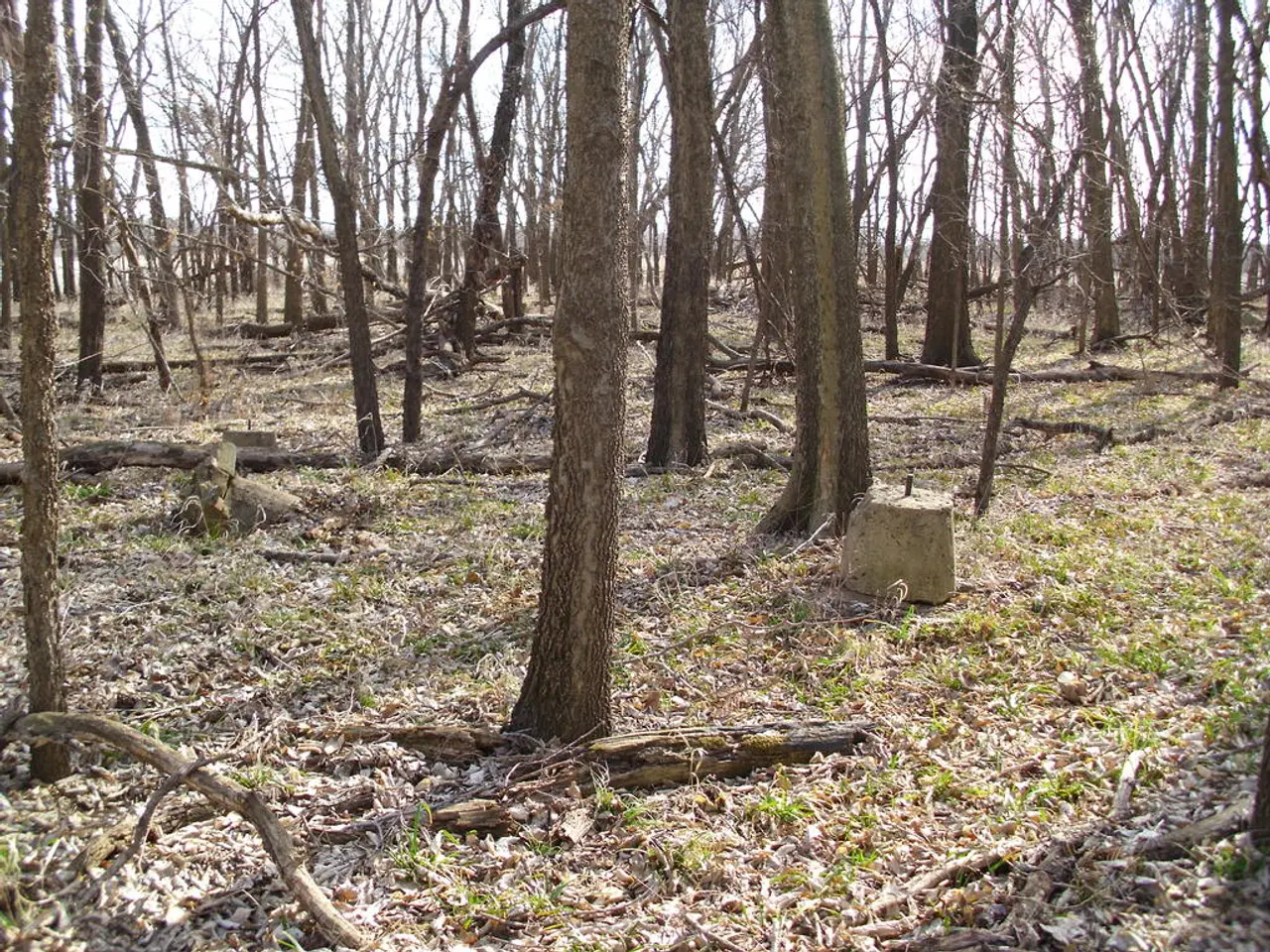Decline in European Forest Carbon Storage: Is Reversal Possible?
In a recent study, the decline in Europe's forest carbon sink has been attributed to increased timber harvesting and the impacts of climate change, such as more frequent heatwaves, droughts, and disruptive events like insect outbreaks, wildfires, and tree mortality. The predominance of monoculture forests, which make up about 30% of EU forests, exacerbates vulnerability to these climate-related stressors.
To combat this decline, several solutions and policy approaches have been proposed. Improving forest management practices to make them more sustainable and resilient to climate extremes and pests is crucial. This includes diversifying forest species to reduce monoculture vulnerabilities.
Reducing greenhouse gas emissions is seen as the most critical strategy to alleviate pressure on forests and their carbon uptake capacity. Strengthening and enforcing policies aligned with the goal of restoring and securing the forest carbon sink is necessary to meet the EU's climate targets and maintain Europe’s climate mitigation capacity from forests.
Enhanced monitoring and research initiatives are also essential. This involves developing better forest monitoring systems using more timely and comprehensive data, including measuring carbon flows among soil, vegetation, and atmosphere. Advancing predictive models to understand impacts of extreme weather on carbon sinks and to better inform policy decisions is also key.
The EU’s Regulation under Land Use, Land Use Change and Forestry (LULUCF) aims for net additional CO₂ reductions by 2030, but current forest carbon sink declines threaten meeting these targets. The European Environmental Agency (EEA) published the EU greenhouse gas inventory in 2024, emphasising the need for integrated forest monitoring, modelling, and forest management strategies.
High-resolution satellite imagery, combined with airborne data and ground observation networks, are essential for monitoring EU forests in a timely manner. Expanding and improving ongoing research that integrates forest growth and socio-economic models would give policymakers a clearer insight into how forest harvesting and harvested products influence the forest carbon sink.
The EU Climate Law, LULUCF Regulation, Nature Restoration Regulation, Carbon Removals and Carbon Farming, EU Biodiversity Strategy for 2030, and New EU Forest strategy for 2030 are all related to this discussion. However, no new insights into the interaction between biodiversity, resilience, and forest management were presented. There is a need to improve the understanding of how biodiversity, resilience, and forest management interact with each other.
The EU aims to preserve its forest carbon sink's expected contribution to climate neutrality by 2050. Between 2010-2014 and 2020-2022, the average forest carbon sink in Europe decreased by approximately 27%. The study does not directly mention any new contributing factors to the decline in carbon absorption or new effects of climate change on forests.
In conclusion, achieving these solutions is critical to meet the EU's climate targets and maintain Europe’s climate mitigation capacity from forests. The potential for the EU to reverse the decline of its forest carbon sink lies in timely regulations and incentives for sustainable practices. Cutting greenhouse gas emissions remains the most important strategy to mitigate the effects of climate change.
- To enhance Europe's climate mitigation capacity from forests, it's crucial to improve forest management practices, which involves diversifying forest species to reduce monoculture vulnerabilities.
- Advancing predictive models that understand the impacts of extreme weather on carbon sinks and inform policy decisions is essential in the realm of environmental-science, particularly in addressing climate-change.
- In order to meet the EU's climate targets, strengthening and enforcing policies that focus on restoring and securing the forest carbon sink is necessary, according to the scientific evidence.
- The European Environmental Agency emphasized the need for integrated forest monitoring, modelling, and management strategies, including research into the interaction between biodiversity, resilience, and forest management, which is currently under-explored.




